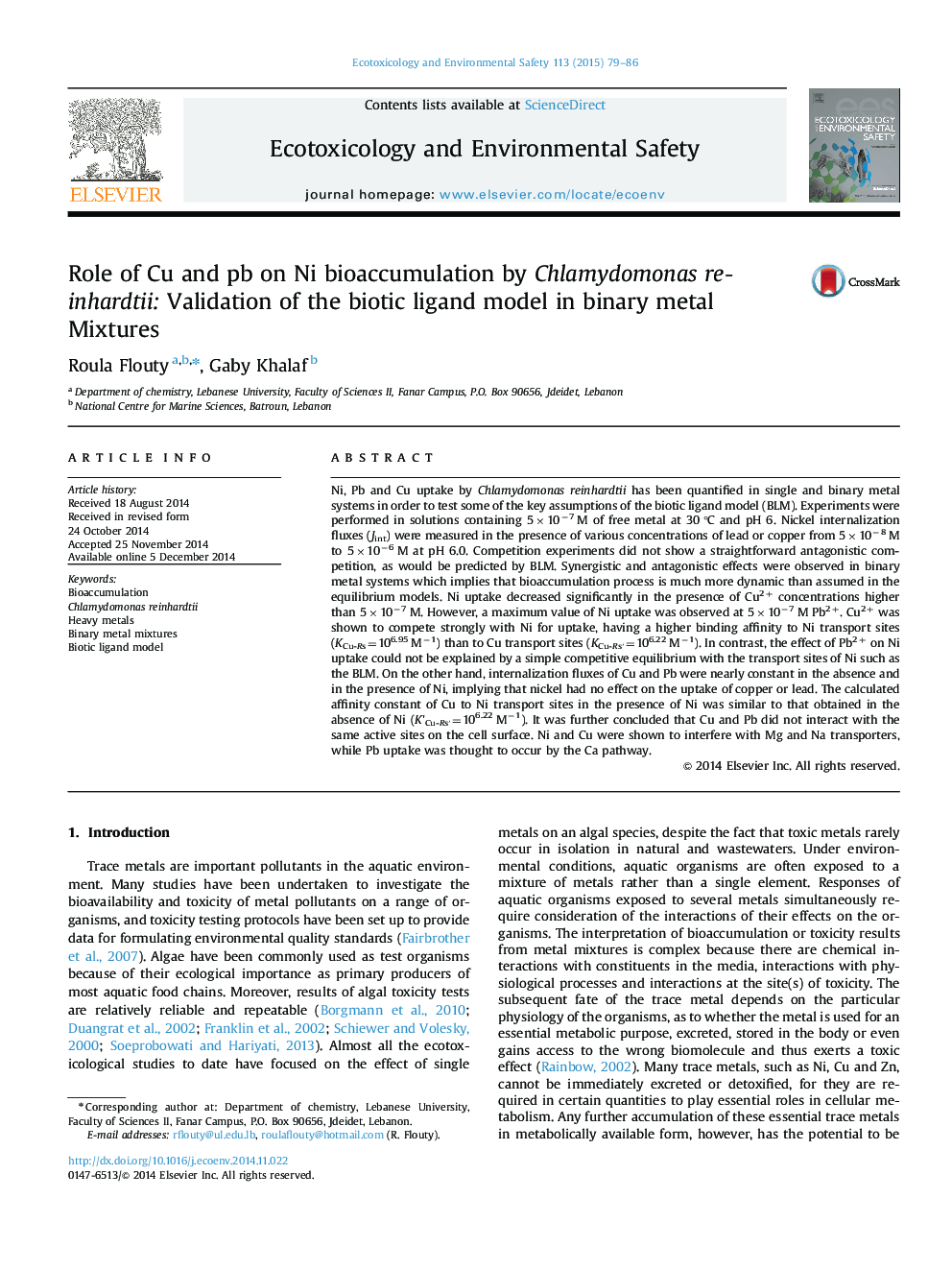| Article ID | Journal | Published Year | Pages | File Type |
|---|---|---|---|---|
| 4419700 | Ecotoxicology and Environmental Safety | 2015 | 8 Pages |
•Ni uptake by C. reinhardtii depended strongly on the concentration of Cu and Pb.•Cu was shown to compete strongly with Ni for uptake as predicted by BLM.•The synergistic effect observed for Pb on Ni uptake cannot be explained by BLM.•Cu and Pb did not interact with the same active sites on algal cell surface.
Ni, Pb and Cu uptake by Chlamydomonas reinhardtii has been quantified in single and binary metal systems in order to test some of the key assumptions of the biotic ligand model (BLM). Experiments were performed in solutions containing 5×10−7 M of free metal at 30 °C and pH 6. Nickel internalization fluxes (Jint) were measured in the presence of various concentrations of lead or copper from 5×10−8 M to 5×10−6 M at pH 6.0. Competition experiments did not show a straightforward antagonistic competition, as would be predicted by BLM. Synergistic and antagonistic effects were observed in binary metal systems which implies that bioaccumulation process is much more dynamic than assumed in the equilibrium models. Ni uptake decreased significantly in the presence of Cu2+ concentrations higher than 5×10−7 M. However, a maximum value of Ni uptake was observed at 5×10−7 M Pb2+. Cu2+ was shown to compete strongly with Ni for uptake, having a higher binding affinity to Ni transport sites (KCu-Rs=106.95 M−1) than to Cu transport sites (KCu-Rs′=106.22 M−1). In contrast, the effect of Pb2+ on Ni uptake could not be explained by a simple competitive equilibrium with the transport sites of Ni such as the BLM. On the other hand, internalization fluxes of Cu and Pb were nearly constant in the absence and in the presence of Ni, implying that nickel had no effect on the uptake of copper or lead. The calculated affinity constant of Cu to Ni transport sites in the presence of Ni was similar to that obtained in the absence of Ni (K'Cu-Rs′=106.22 M−1). It was further concluded that Cu and Pb did not interact with the same active sites on the cell surface. Ni and Cu were shown to interfere with Mg and Na transporters, while Pb uptake was thought to occur by the Ca pathway.
